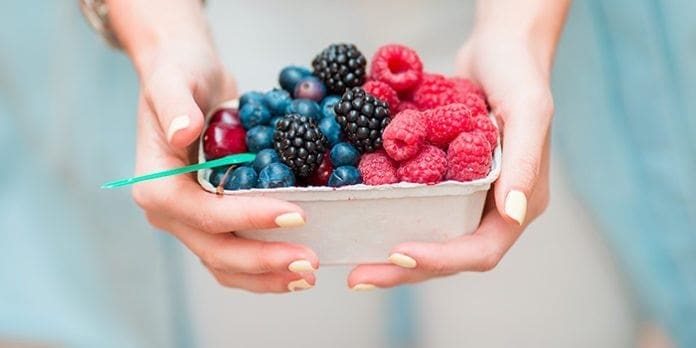Every life stage calls for adjusting your diet to keep your body functioning at its peak. From getting enough calcium and Vitamin D as a teenager to building bone mass in your 20s, each phase of life has its own distinct needs. Young adults with especially busy lives face special demands, says accredited Australian dietitian Jessica Spendlove. “Fruit, vegetables and fiber are all of crucial importance here, even when we’re eating on the go,” she says.
Spendlove recommends women in their 20s and 30s should increasing their intake of fruit to two servings per day. Eating between five and six servings of vegetables and four to five servings of grains is important. You’re still building bone mass in your 20s and 30s, so aim for two to four servings of calcium. Get two to three servings of protein each day.
Women in their childbearing years may wish to boost fertility by eating to supplement folate. The single best foods to boost folate levels naturally are dark leafy green vegetables such as spinach and kale. Include one serving of a leafy green vegetable for both lunch and dinner.
Since one in four women lack enough iron, they need to add more iron in their diets. Legumes, Brazil nuts and lentils are good sources of iron for those who don’t eat red meat. Vitamin C will help your body absorb iron from whole grains, beans and fortified cereals. Foods that are loaded with Vitamin C include broccoli, bell peppers, citrus, tomatoes and kiwi.
Here are more foods to encourage pregnancy. Sprinkle olive oil, avocado, nuts and seeds on your leafy green veggies for Vitamin E. Broccoli, kale, cabbage and cauliflower help metabolize estrogen. Omega-3 essential fatty acids from fish and fish oil supplements are important.
The dietitian for top Australian sports teams says teenagers should get between three and four servings of calcium each day. They should not neglect getting the correct daily intake of fruit, vegetables and whole grains. “The other important nutrient at this age is Vitamin D, which you can get from the sun,” said Spendlove.
Women moving into their 40s and 50s will face big hormonal changes. The biggest will be menopause.
Read more on eating for each phase of life into your 40s, 50s and beyond: What to Eat in Each Decade







